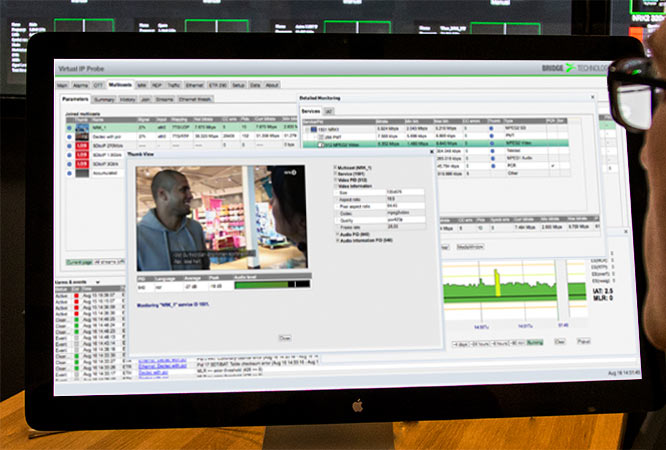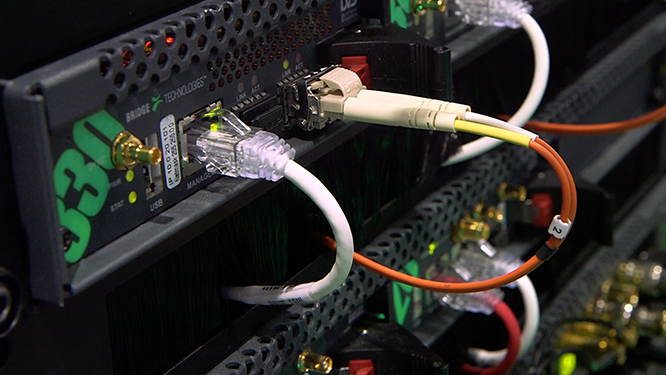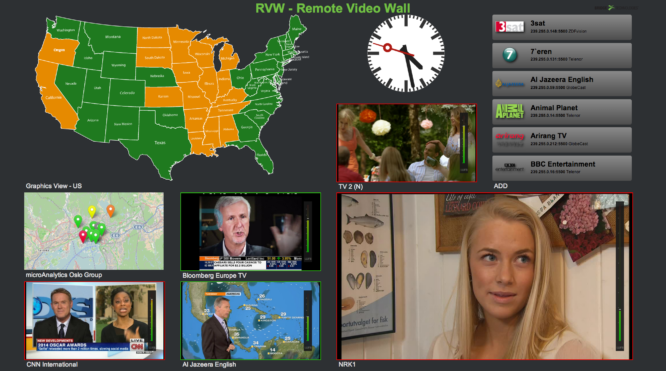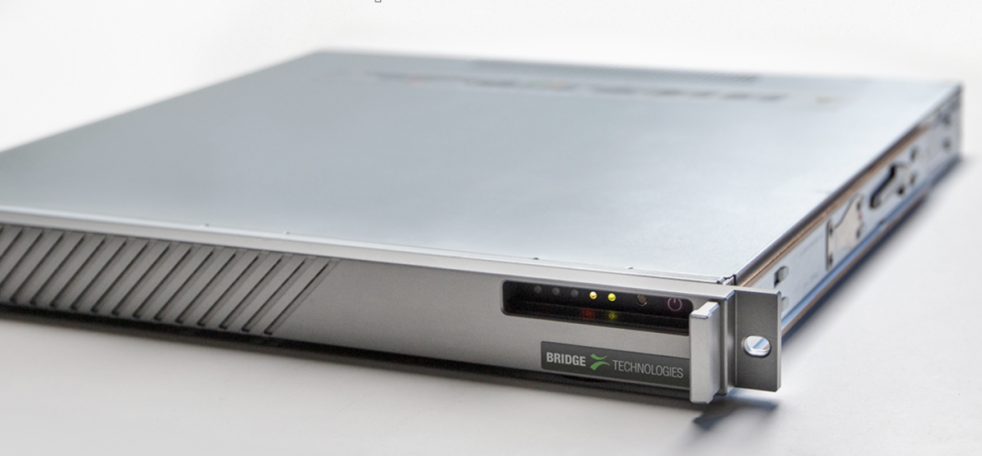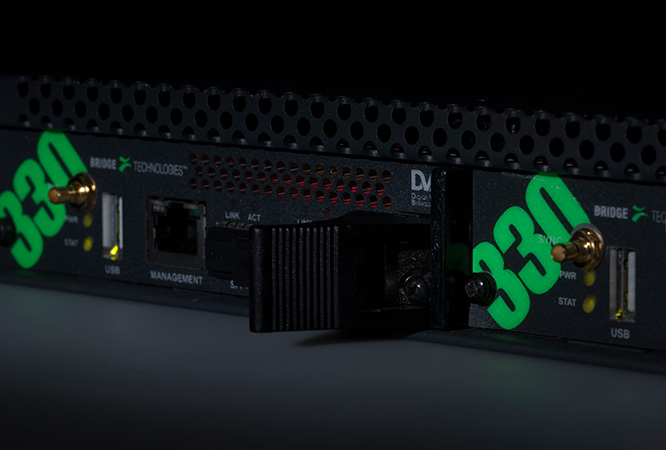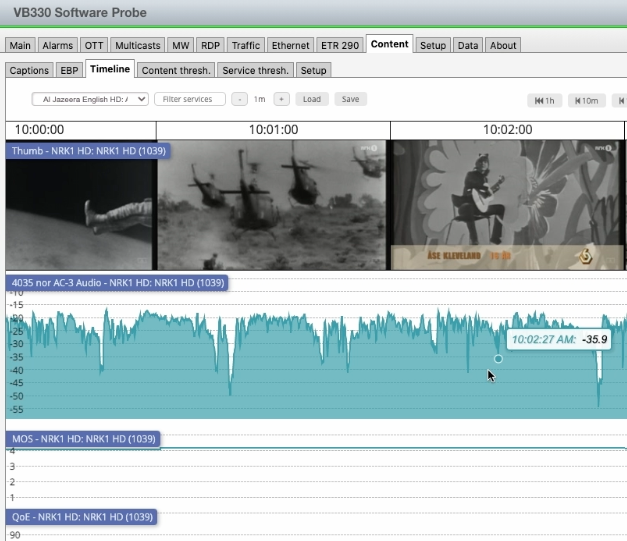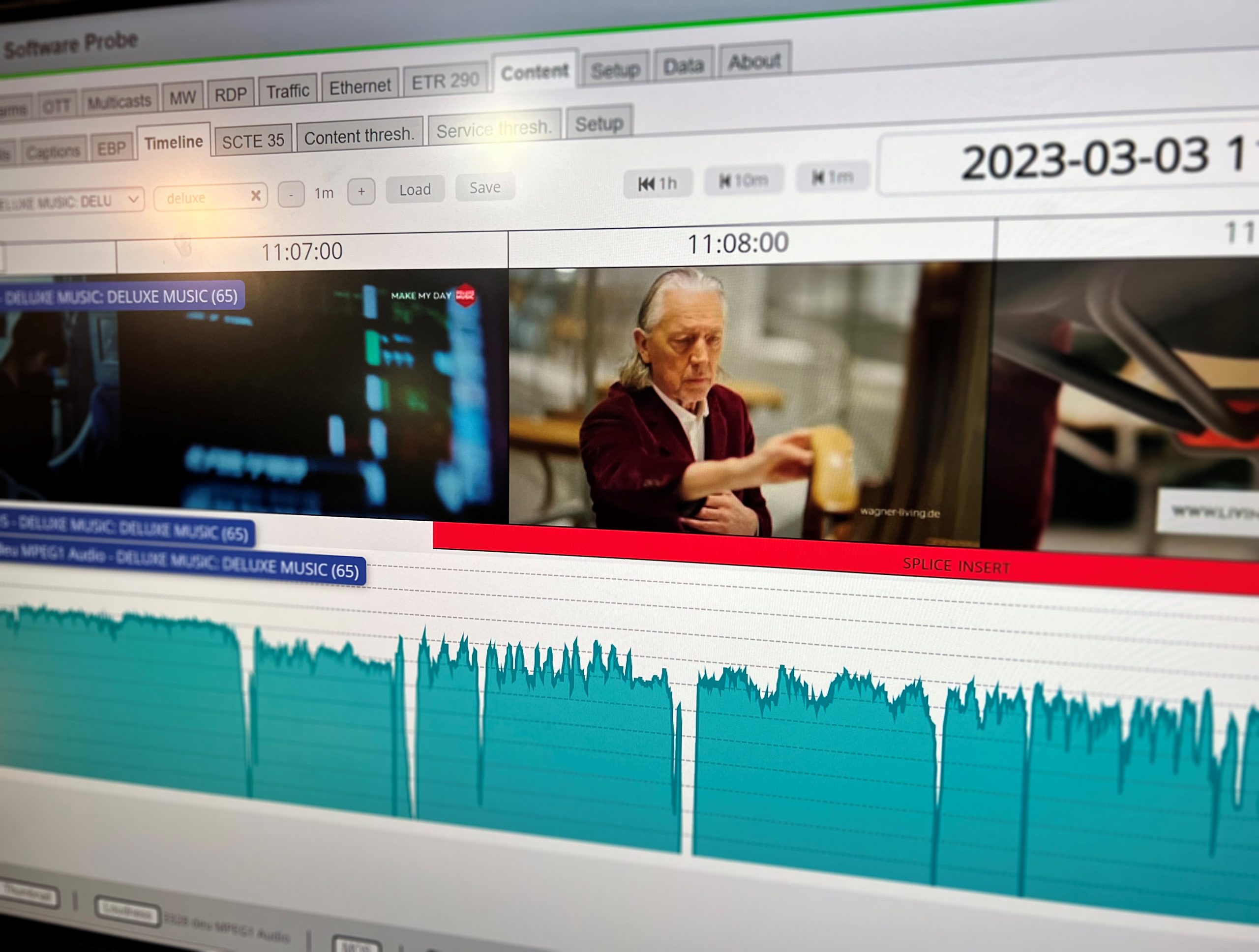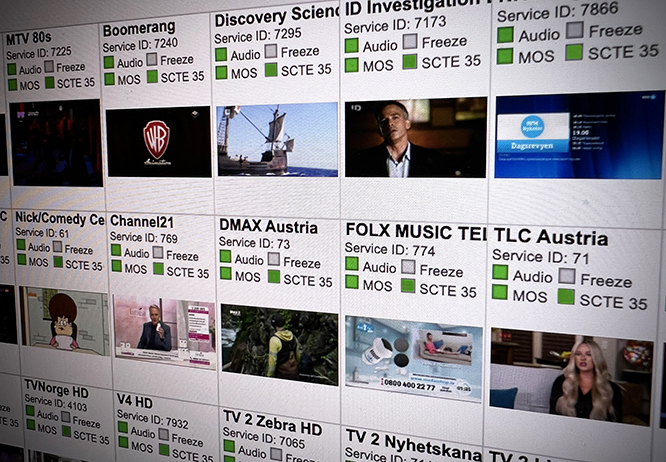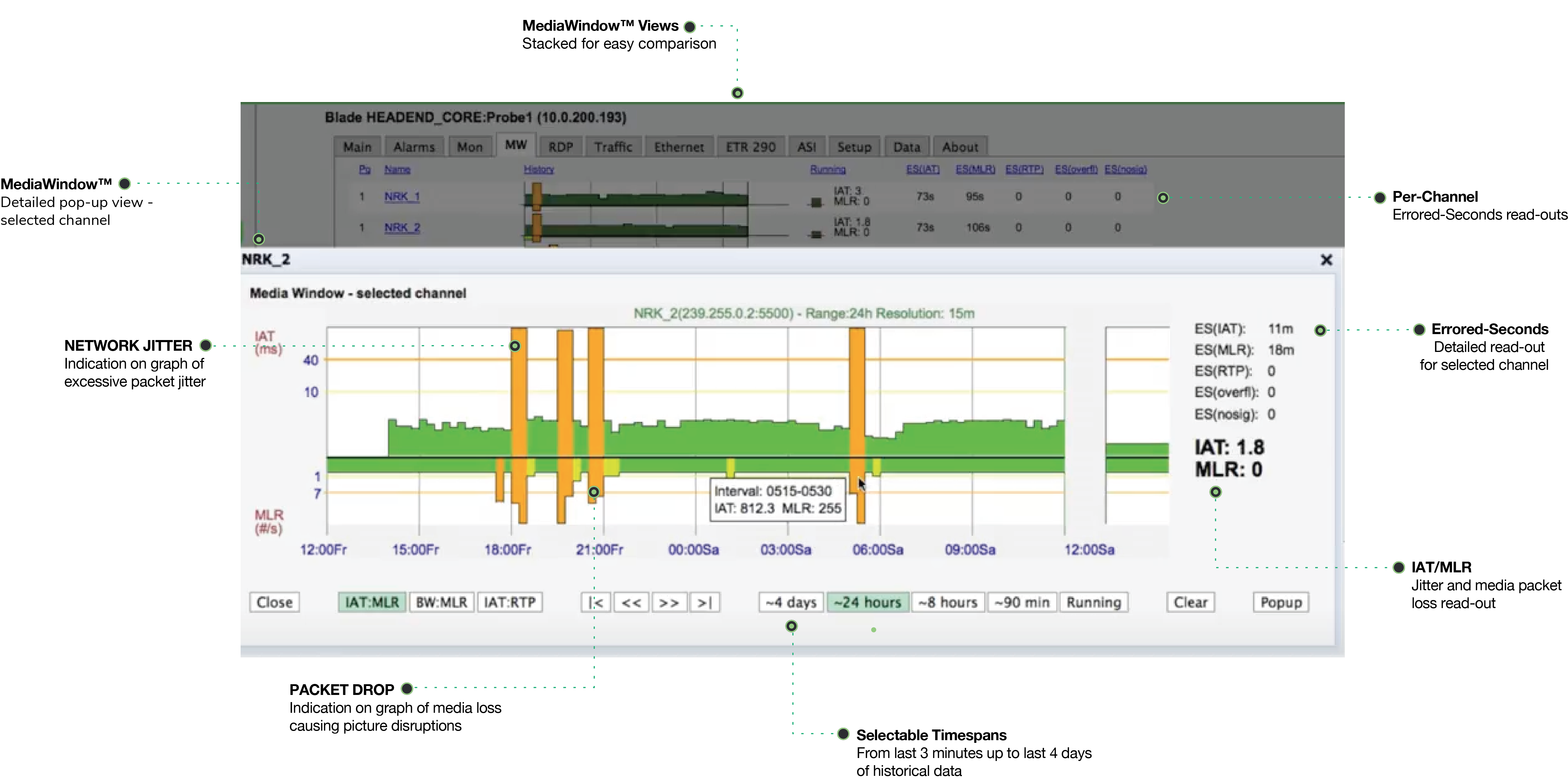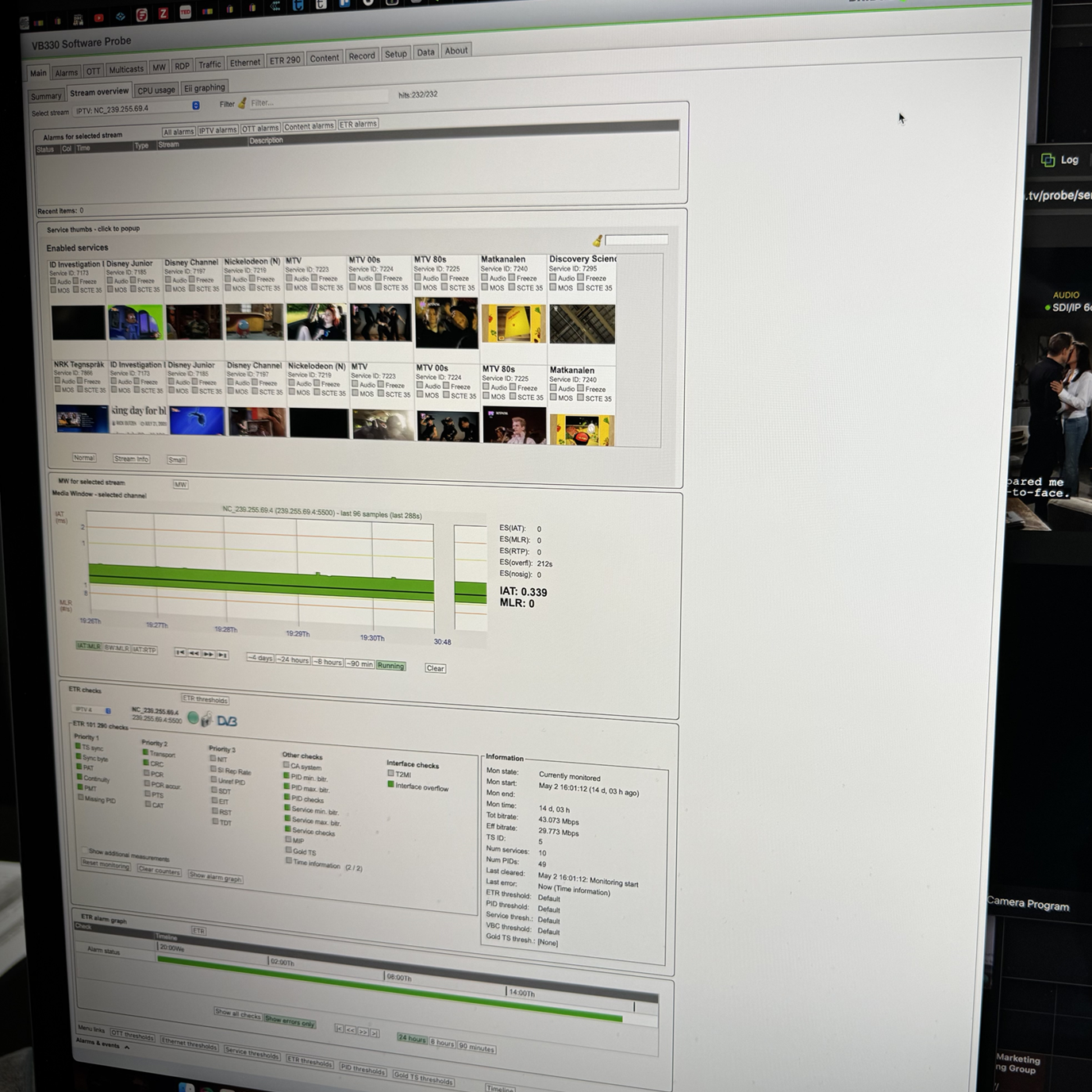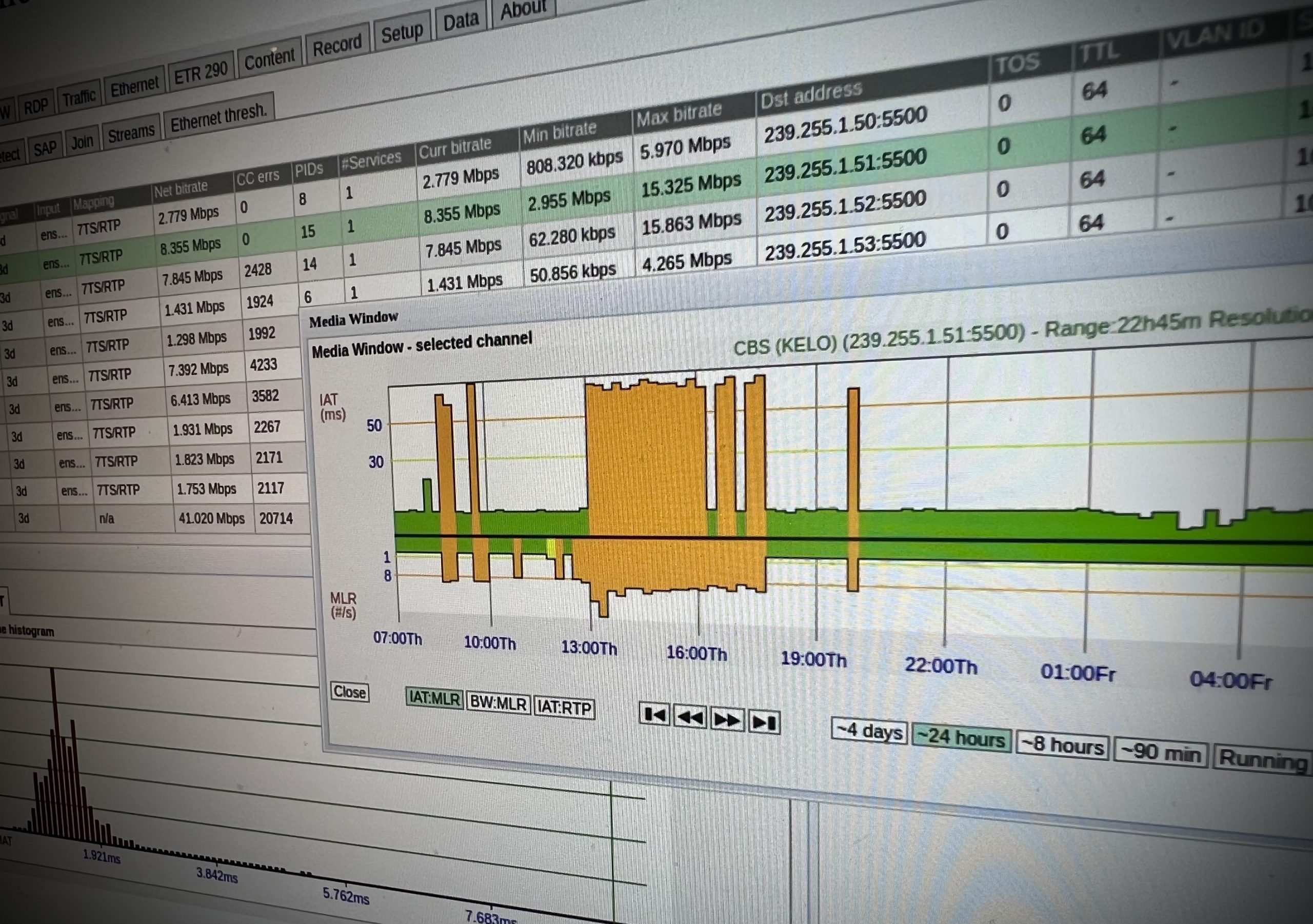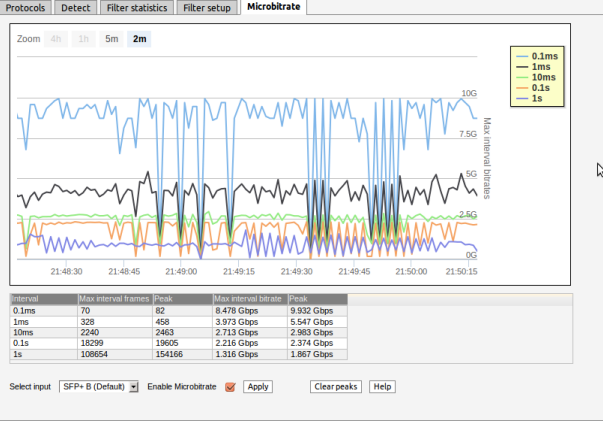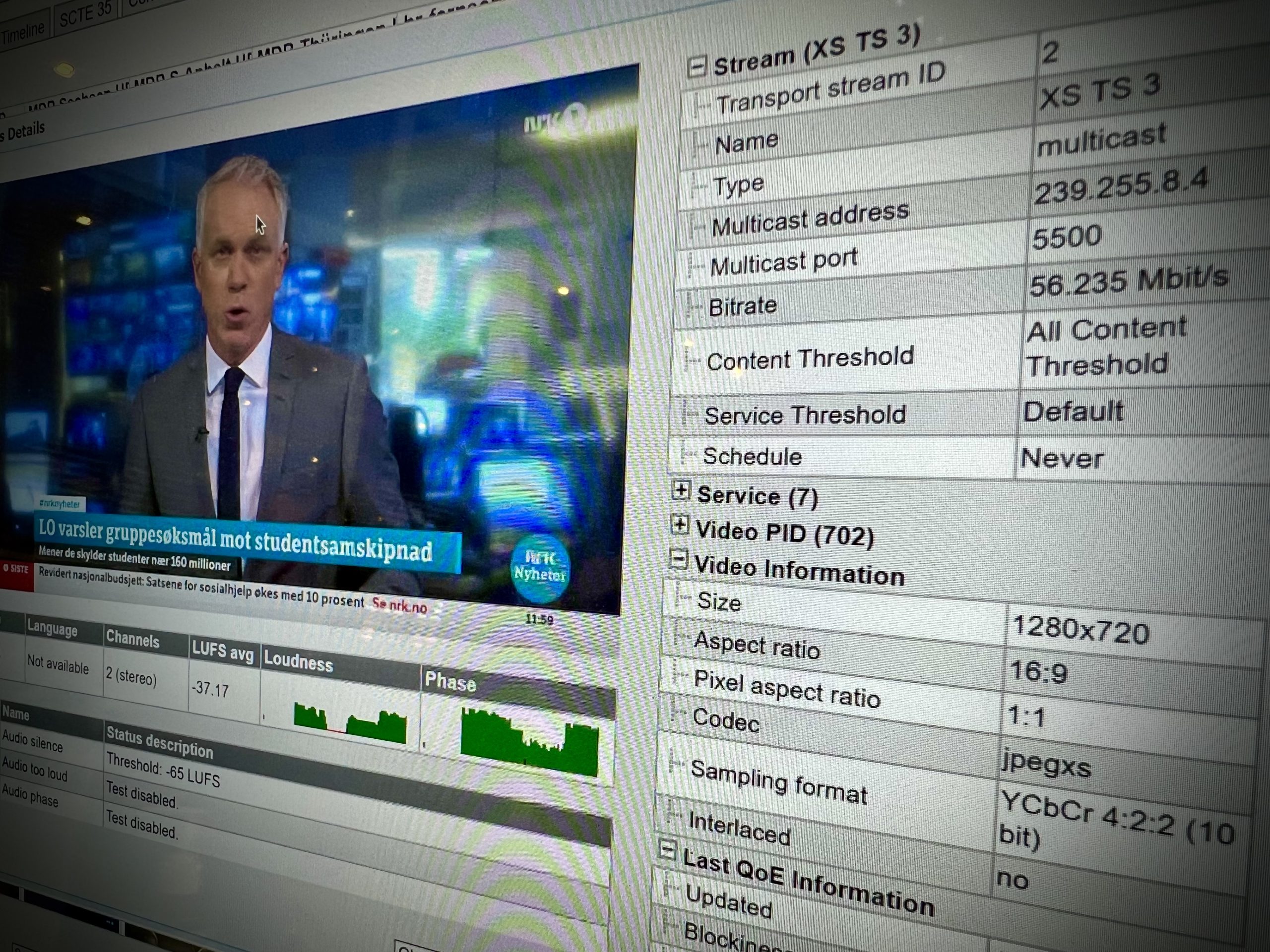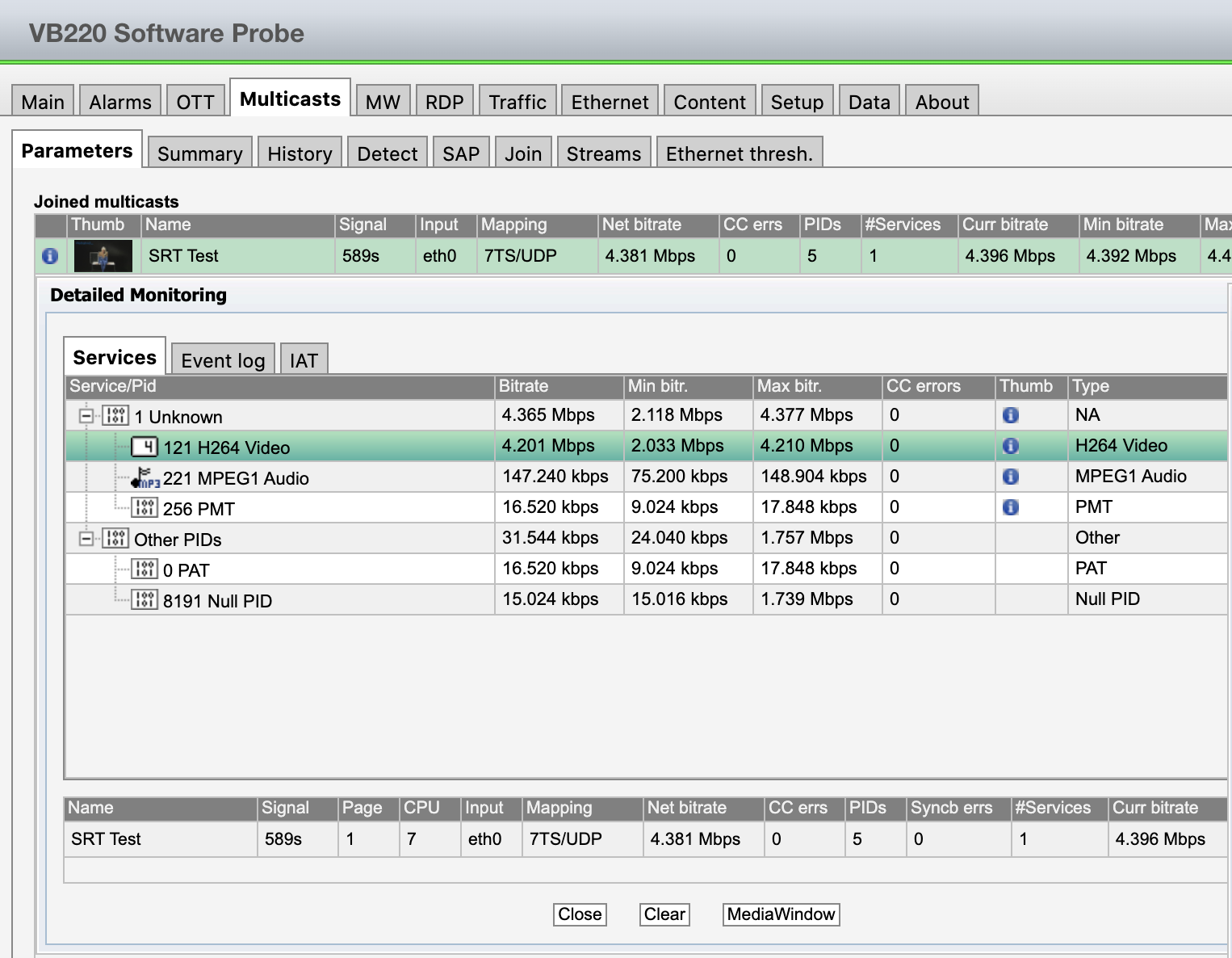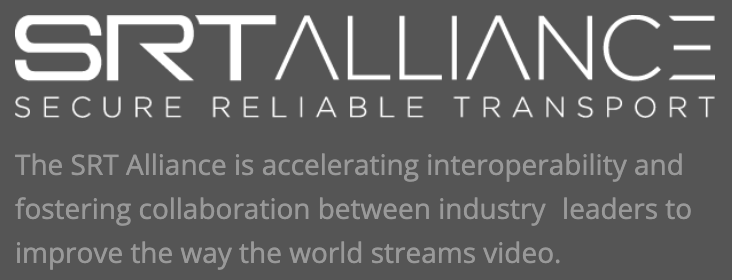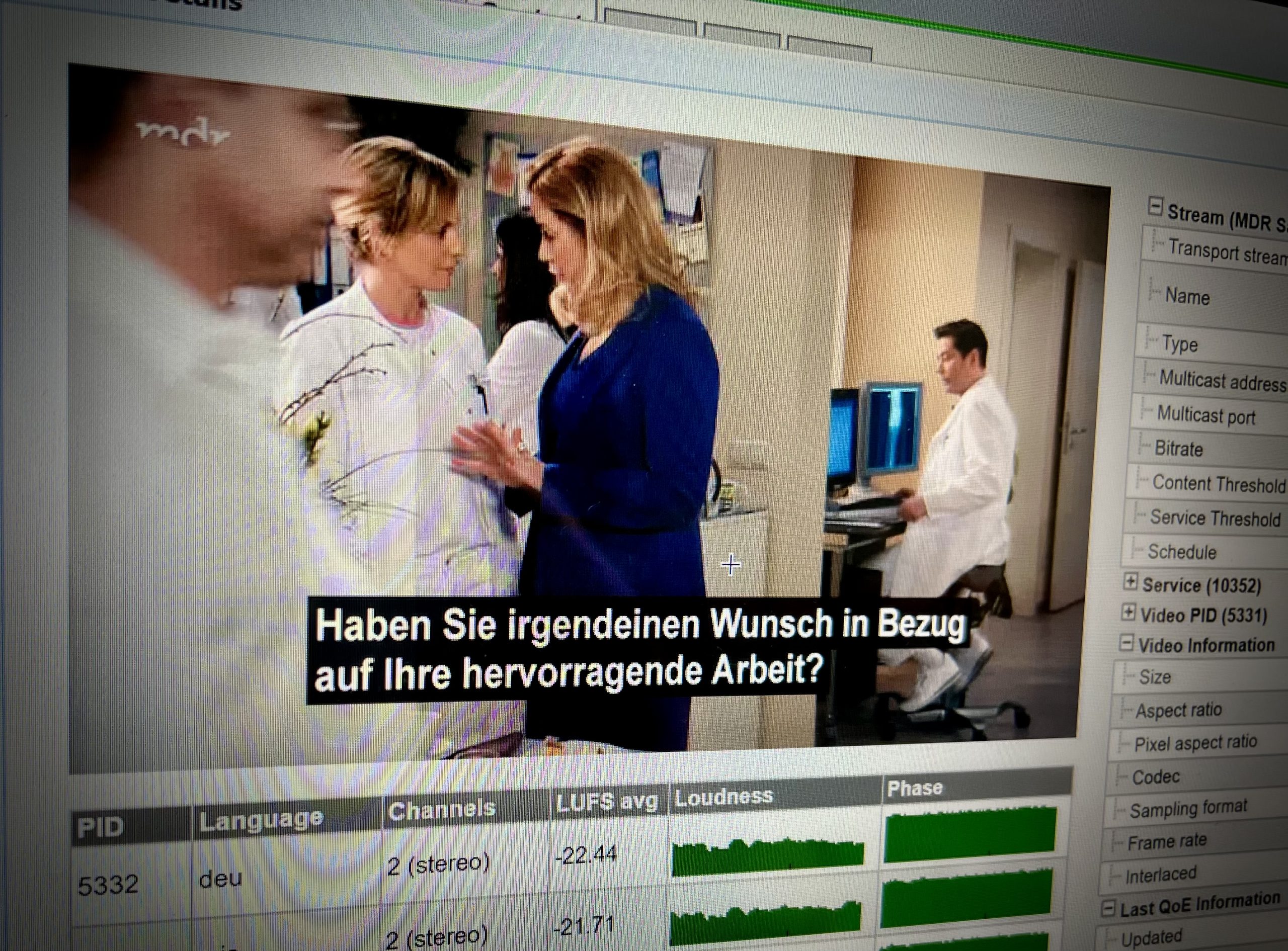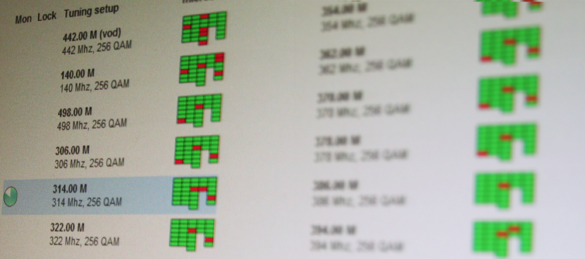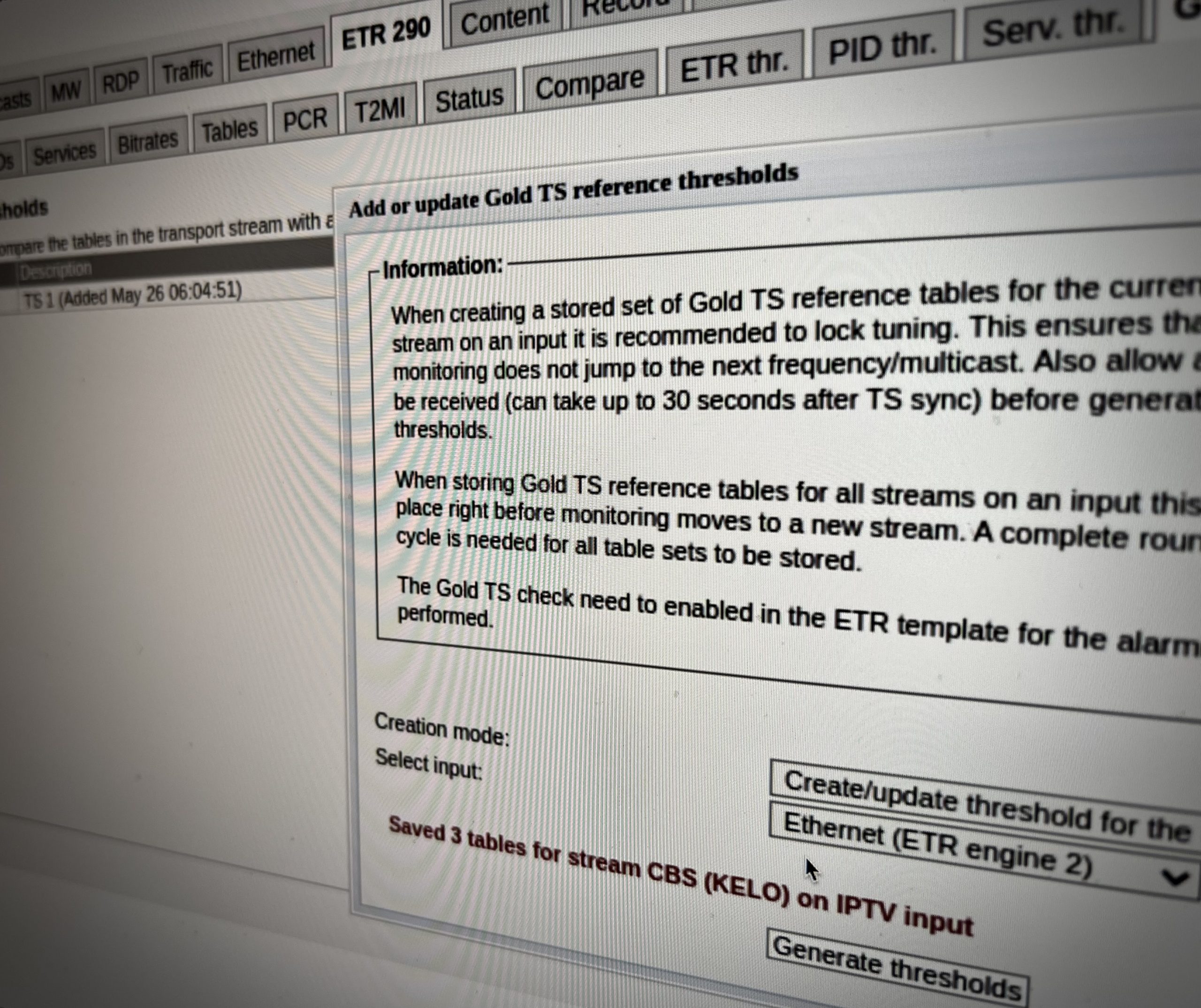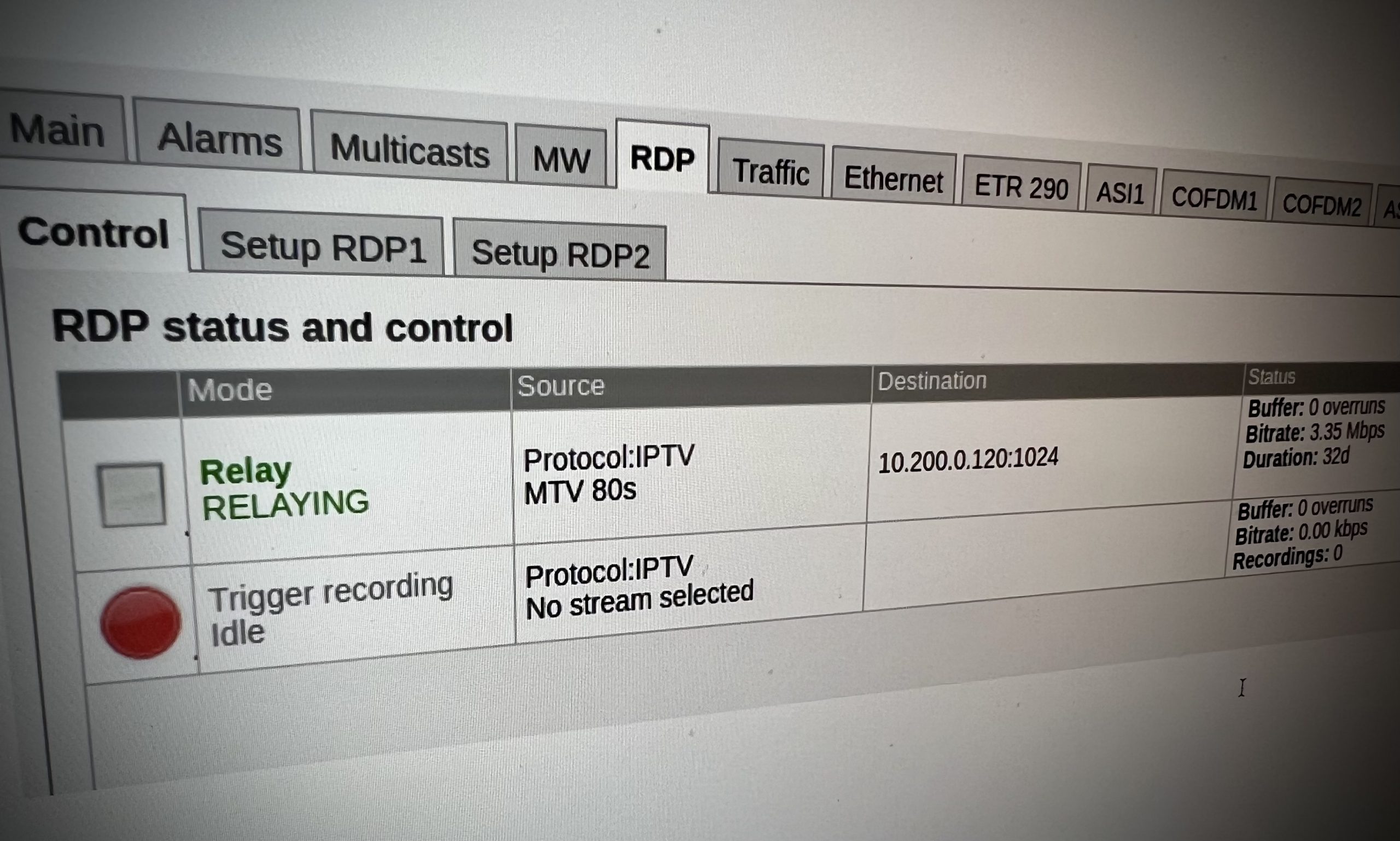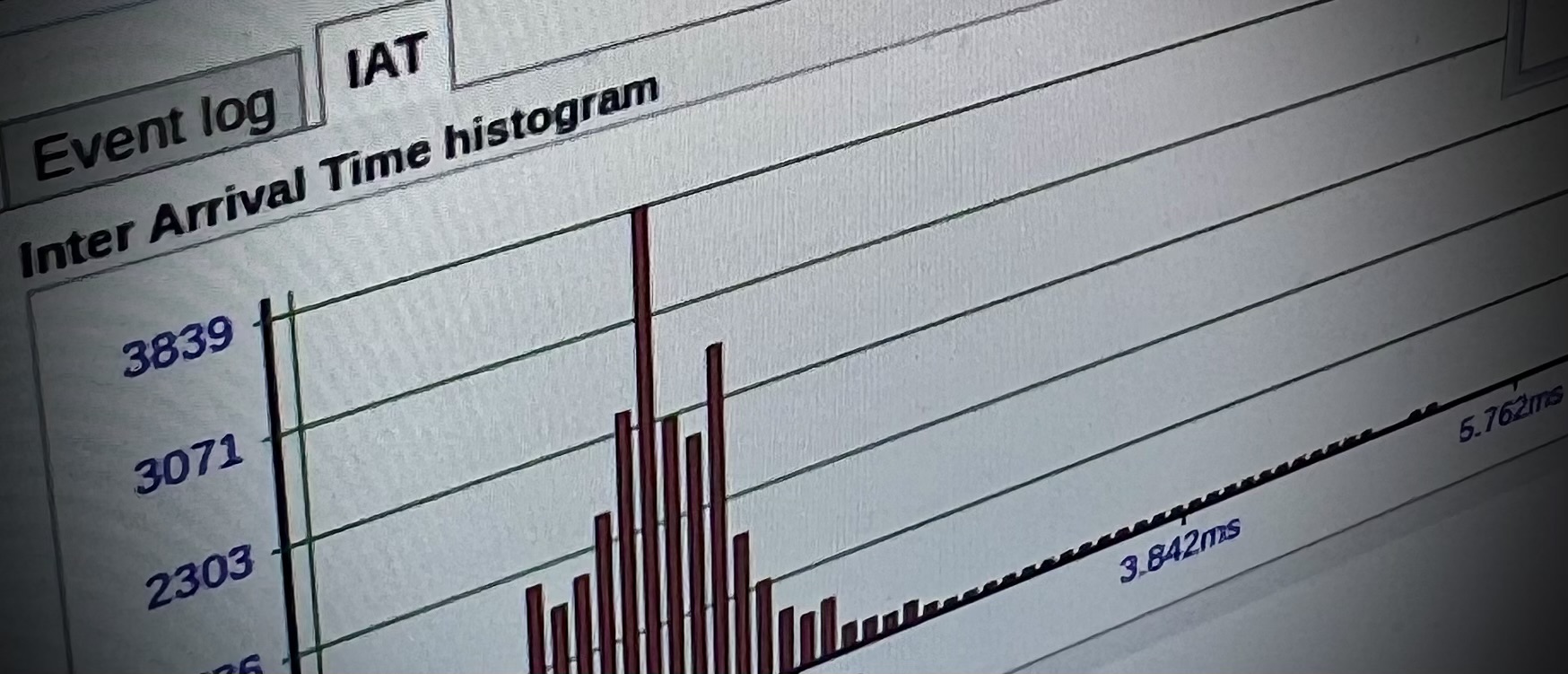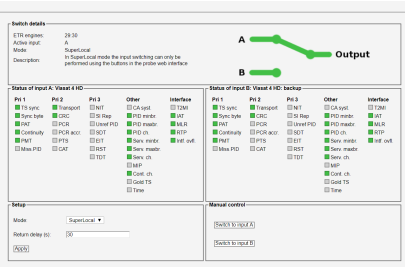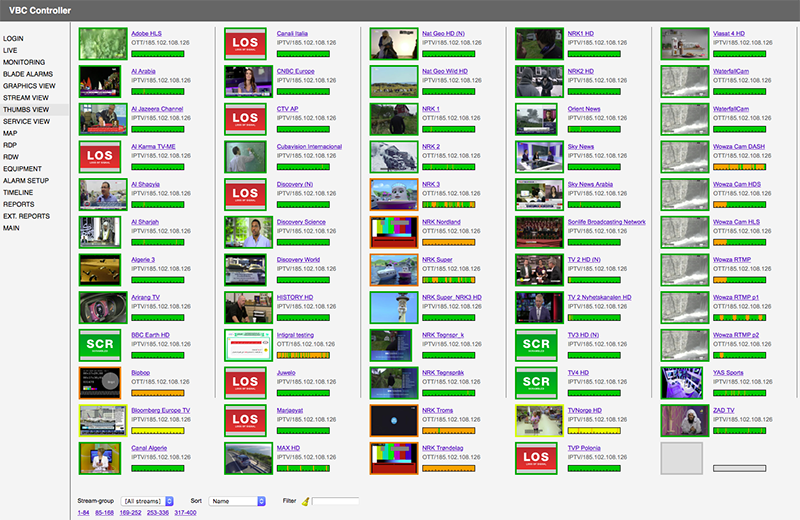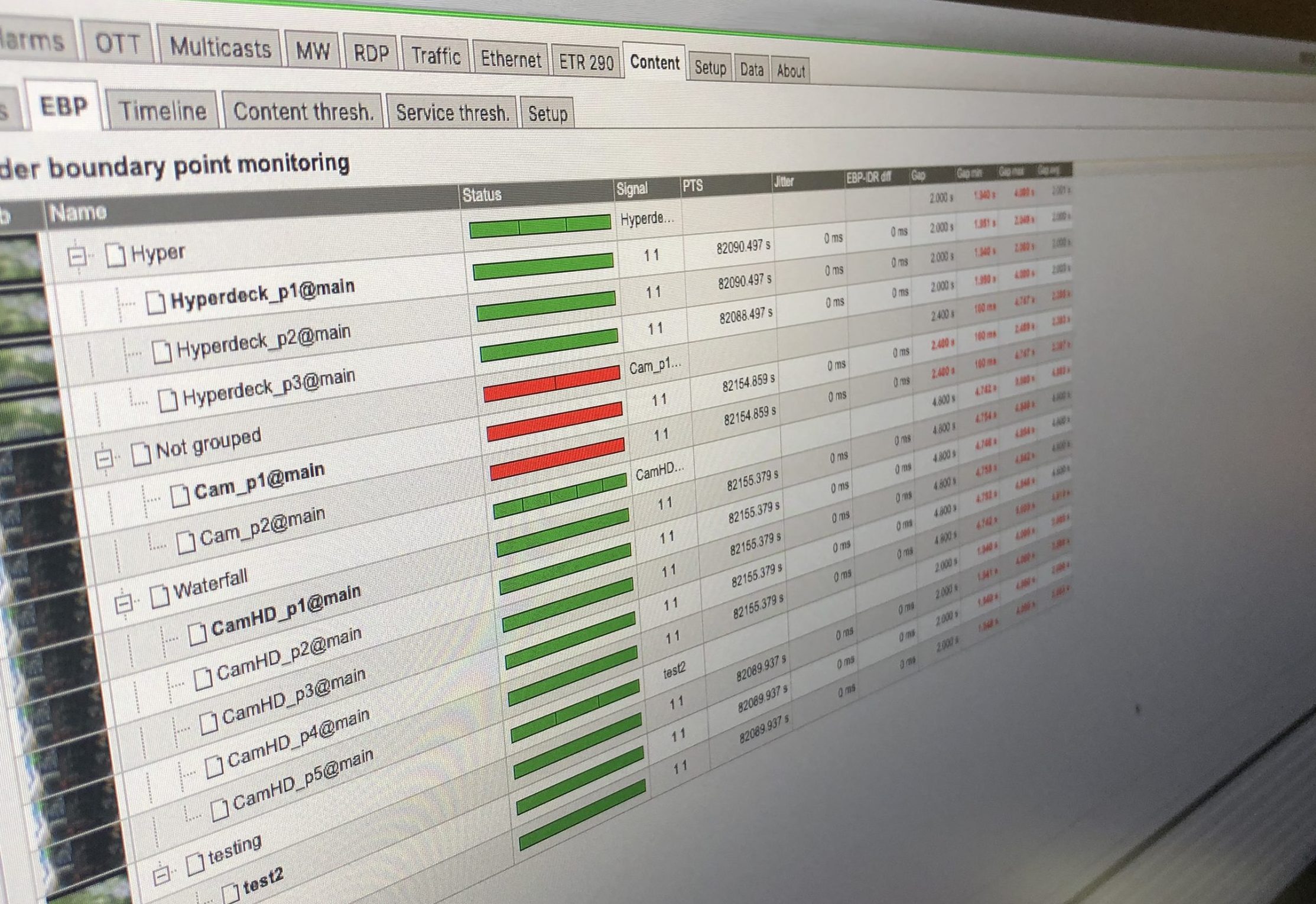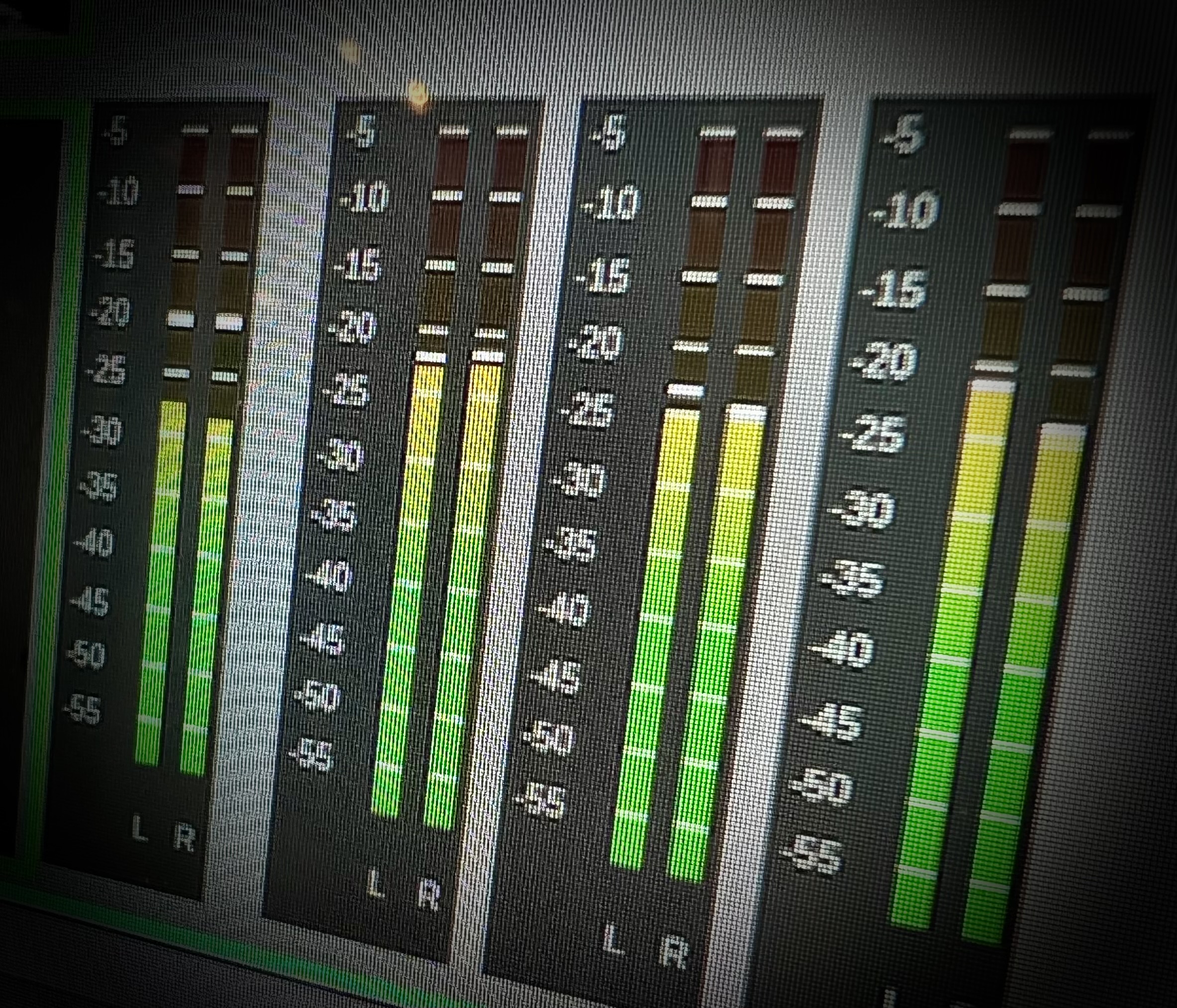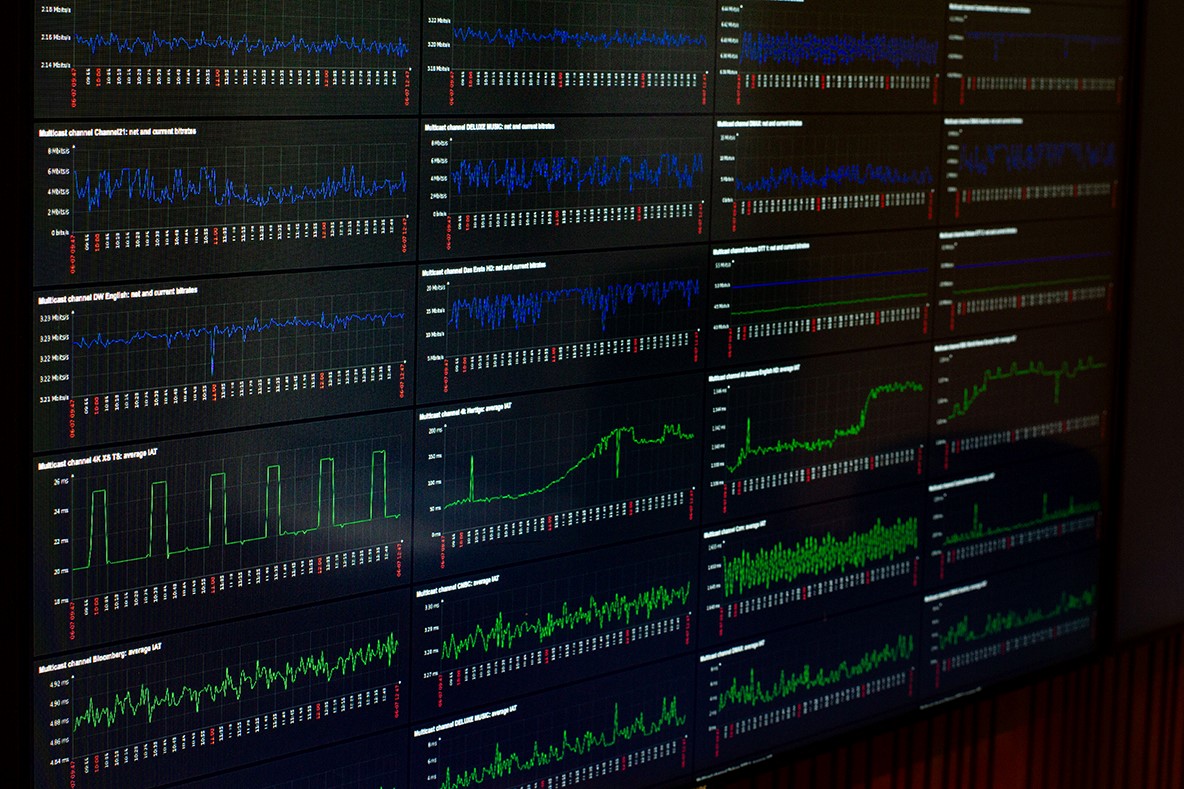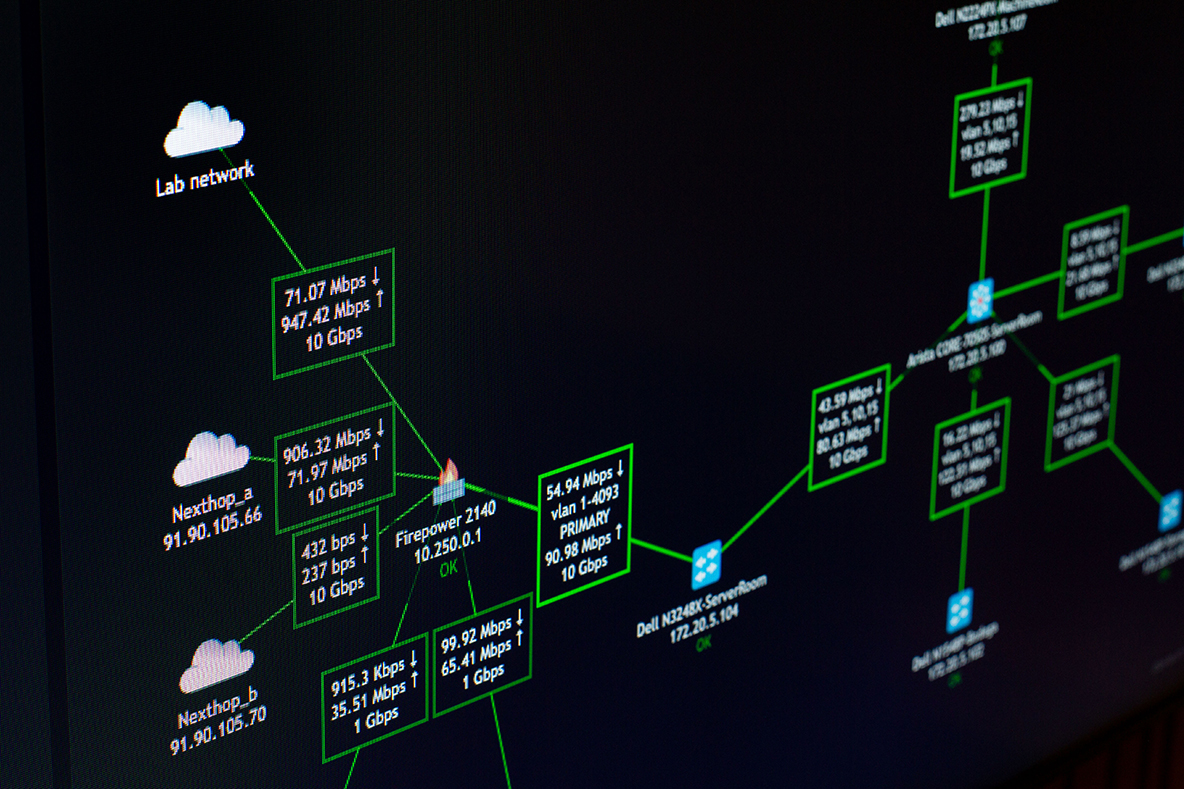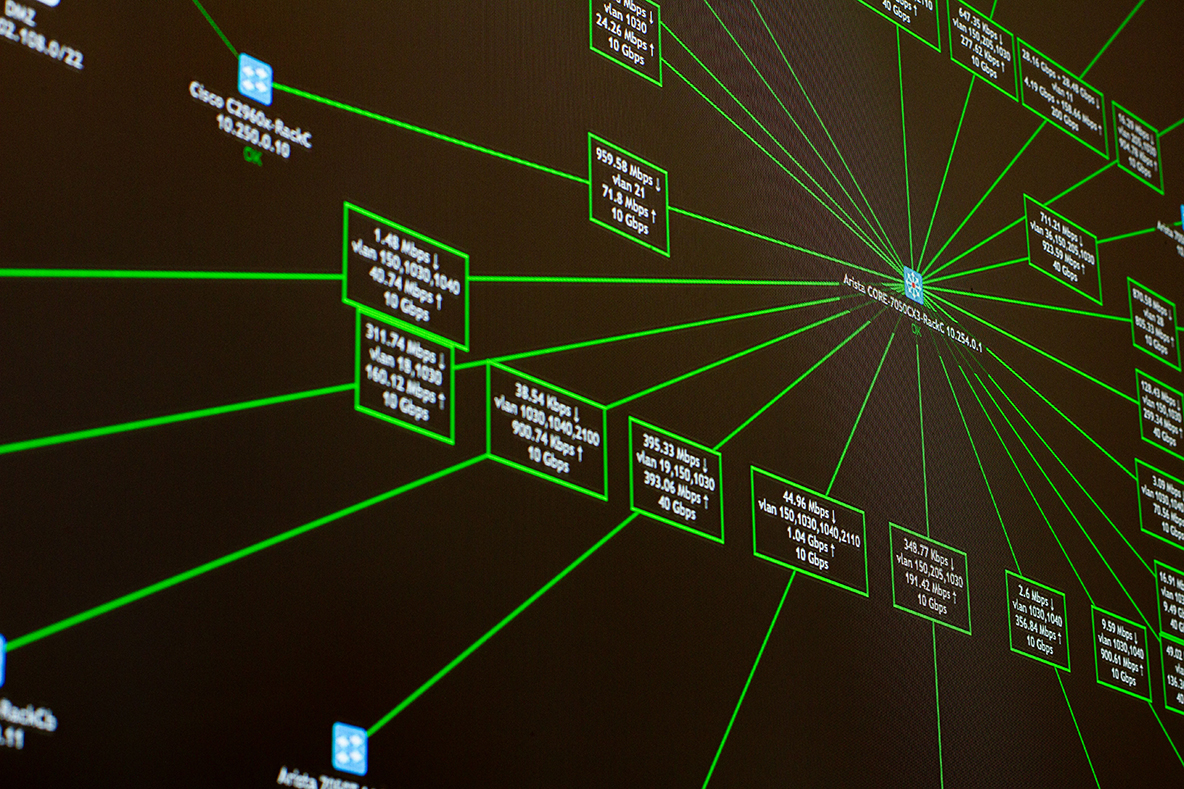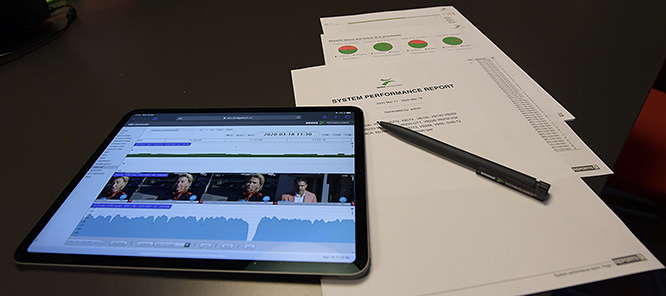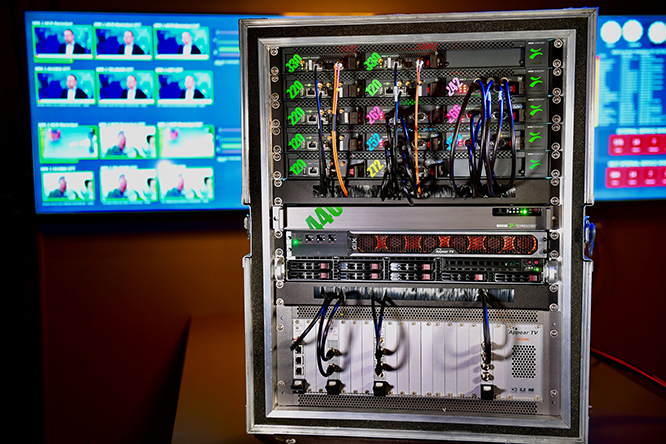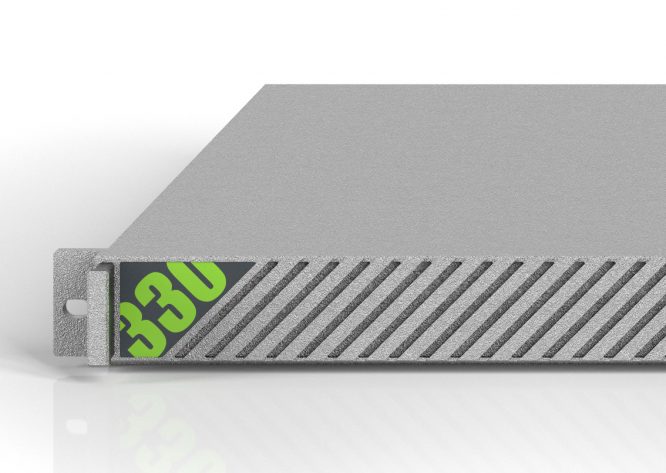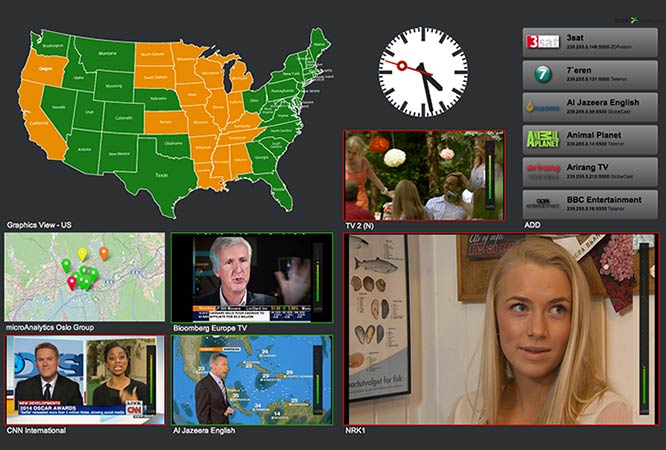KEY FEATURES – VB330 APPLIANCE, VB330 SOFTWARE and VB330 EMBEDDED probes
- Continuous monitoring of up to 2000 IP media multicasts with extraction and monitoring of relevant parameters for the Ethernet, IP, UDP and Transport Stream layers (ETSI TS 102 034)
- MPEG2 (SD/HD), H.264/AVC/MPEG-4 AVC (SD/HD/UHD), MPEG-4p10, H.265/HEVC (8 bit, 10 bit, SD/HD/UHD), JPEG-XS, JPEG-2000 all up to 60fps (APPLIANCE and SOFTWARE probes)
- Support for active testing of up to 1000 OTT/ABR streams (500 for EMBEDDED probe). No limit on profiles
- TR 101 290 priority 1, 2 and 3 analysis on up to 1000 streams concurrently (400 for EMBEDDED probe)
- Support for Secure Reliable Transport (SRT) with 200 concurrent Receive and 2 concurrent Transmit sessions (APPLIANCE and SOFTWARE probes)
- QoE Content analysis and MOS scoring on up to 1000 streams concurrently with black frame detection and alarming (APPLIANCE and SOFTWARE probes)
- LUFS/LKFS loudness monitoring and alarming on up to 1000 streams (APPLIANCE and SOFTWARE probes)
- Recording option allowing concurrent recording of up to 200 multicast streams for an aggregated bandwidth up to 10Gpbs (APPLIANCE and SOFTWARE probe)
- Innovative multicast collision detect and alarming functionality
- Monitor IEEE 802.3Q VLAN trunks and terminate up to 200 individual VLANs inside probe
- Patented MediaWindow™ visualisation technology for trending packet loss, jitter and bandwidth over time with 4 days of history on all IP multicasts
- Support for IPv4 and IPv6 multicast monitoring and management (IGMPv2/v3 and MLD)
- Passive automatic detection of multicast/unicast streams present on interface
- Active multicast scan and discovery functionality
- Support for Session Announcement Protocol (SAP) for easier multicast stream management
- Protocol hierarchy view with bandwidth and packet count statistics for each active interface
- Web-based management interface for remote access from leading browser platforms
- Security features such as HTTPS using TLS 1.1 and 1.2 with a self-signed certificate
- Limit access to web interface via configurable roles and passwords
- Innovative Remote Data Path (RDP) functionality for relaying any two IP multicasts monitored to central destinations for further analysis. Supports plain TS-into-UDP, TS-into-RTP and SRT (Secure Reliable Transport)
- IGMPv2/v3 protocol logging and analysis framework for multicast fault finding
- Flexible template based alarming system to allow custom configuration of what parameters result in an alarm being generated on a per-TS level
- PCAP capture of up to 2GB of data for further analysis using 3rd party applications such as Wireshark
- Innovative Microbursting jitter analysis for monitoring difficult to detect bandwidth spikes on network interfaces
- MediaKind mediaRoom™ X-bit RTP header extension support
- Alarm on changes to TOS/DSCP and TTL IP header files for detection of changes in network prioritization
- Monitor all received SRT streams using powerful tools such as ETR290 analysis, MediaWindow™ packet drop and jitter analysis, QoE content monitoring and alarming, thumbnail mosaic
- Support for JPEG-XS thumbnail decode and QoE content alarming and analysis (APPLIANCE and SOFTWARE probes)
- Full Service Monitoring of any network device via built-in ICMP and HTTP query agents
- Searchable alarm lists with up to 10,000 alarms stored locally on probe
- Alarm forwarding to 3rd party systems via SNMP TRAP via up to 3 unique destinations or via XML-based polling
- NTP client time synchronization support according to RFC5905 with time zone database download functionality
- DHCP client support on management and video ports according to RFC2131
- Easy web-based software and license upgrade
- XML-based configuration save and retrieval via web
- Powerful and openly available XML-based External Integration Interface (Eii) for 3rd party system integration allowing access to all measurement data inside probe
- Condensed mosaic thumbnail overview of all services monitored with red/green alarm indication
- CMAF HLS and DASH compliance. SmoothStream™, HDS and RTMP support
- Innovative graphical timeline presentation of all OTT/ABR alarms and warnings going back up to 4 days in time
- Transport alarms, HTTP alarms, XML Manifest alarms, QoE content analysis alarms
- Detailed thumbnail view with media structure information and loudness indicators
- Framework for key server access and decryption
- Profile alignment verification with VMAF scoring (APPLIANCE and SOFTWARE probes)
- Innovative Advanced Manifest functionality for 2-step bespoke manifest queries
- OTT/ABR audio Loudness extraction for presentation in Timeline view (APPLIANCE and SOFTWARE probes)
- (EBP) Encoder Boundary points monitoring and Analysis for verification of Segmenter ingest
- Downloads every chunk for analysis
- Unique PTS versus PCR timing analysis for all PIDs within a transport stream for detection of lip sync skew issues
- SCTE35 ad-insert cue tone monitoring, logging and alarming on up to 2000 multicasts and 1000 OTT/ABR streams (500 OTT/ABR streams for EMBEDDED probe)
- Innovative TR 101 290 Gold TS™ Protection with alarming for comparison against pre-recorded stream
- Fully VMware and OpenStack compliant
- Deliverable as ISO installer, OVF image or standalone installer
- Support for L2TP de-encapsulation and TR 101 290 analysis relevant for Remote PHY cable applications as seen in DOCSIS 3.0/3.1 architectures
- Redundancy / 2022-7
- Timeline view with logging going back up to 2 years, depending on storage capacity (APPLIANCE and SOFTWARE probe)
- Timeline zoom levels from 1 second up to 1 hour with date/time selector
- Timeline graphs showing thumbnails, audio loudness, MOS scoring, QoE analysis, SCTE35 events, Recorded files, Caption data, VMAF scoring
- Set up triggered recording based on alarms with pre-trigger buffer fill, configure time scheduled recordings or manually initiate recordings
- Main audio formats supported include MPEG1, AC-3, E-AC-3, AAC, AAC LATM, SMPTE PCM
- Loudness monitoring LUFS / LKFS with alarming according to ITU 1770, ATSC A/85 and EBU R128


